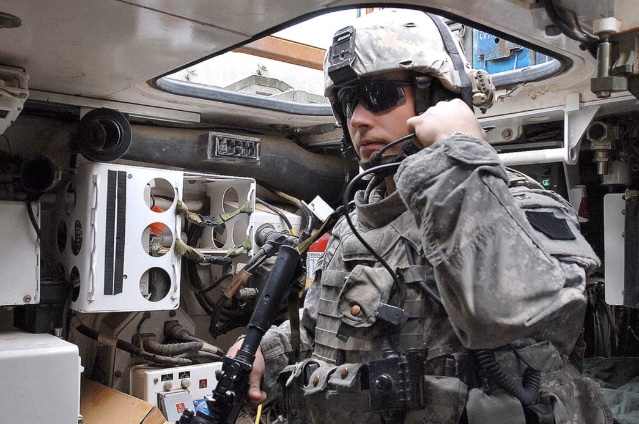
The U.S. Defense Advanced Research Projects Agency (DARPA) has awarded contracts to CACI International and Perspecta Labs for the Wideband Secure and Protected Emitter and Receiver (WiSPER) project. WiSPER will develop secure radio frequency (RF) transmitter and receiver technologies to enable the next generation of secure military tactical radio systems.
Current radio security uses spread-spectrum techniques where transmitted content is spread out over time and operating frequency in attempts to reduce transmitted power density and operate below the adversary’s receiver detection limit. These techniques, however, lack sufficient complexity to evade detection by modern signals intelligence (SIGINT) receivers or interception by compromised devices, leaving them vulnerable to hypersensitive and collaborative receivers. These receivers override spread-spectrum transmissions by reducing uncorrelated noise or by using multi-receiver networks that coherently recombine power to detect the transmitter.
The military has attempted to overcome these detection problems by using chaotic waveforms that reduce cyclic features – but these only provide marginal reduction of detectability. Directional beams and reconstruction of coherent scattered signals have also been used, but are impractical for today’s tactical radios.
Thus, the WiSPER program seeks to develop disruptive wireless air interface transceiver technology to enable and sustain secure high-bandwidth RF communication links. The WiSPER wideband adaptive air interface would also mitigate impairment from dynamic harsh and contested environments to maintain a stable communication link.
The two initial contracts are for the project’s 18-month first phase, which involves carrying the WiSPER system architecture through a conceptual design supported by modeling and simulation, ending in a benchtop implementation and lab test. Overall, WiSPER will be a four-year, three-phase program with the 18-month second phase focusing on design improvement and ending in a transportable implementation and field test; and a year-long third phase to further optimize the air interface to demonstrate adaptation to weather and other impairments in a portable prototype implementation.
